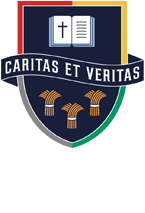Art
Art develops spiritual values and contributes a wider understanding to the experience of life, which helps to build a balanced personality.”
Bridget Riley
Intent
Art allows students to assess the world around them using a visual language helping to bring about a balance between creativity and more academic work. Studying art helps students to build confidence through the acquisition of skills and the development of an idea from concept to the production of an independent final piece. The department aims to follow a balanced and inclusive scheme of learning based around the Fine art principles of drawing, painting, printmaking and sculpture. We support students in becoming more resilient learners, unafraid to try new ideas, make mistakes and learn through this process. We aim to foster a lifelong passion for Art and encourage students to nurture their passion for the subject outside of the classroom, providing students with a sense of pride and achievement. Developing students’ enquiry skills and creativity can support their learning journey in all aspects of the curriculum and hopefully beyond into the outside world.
Design Rationale
Drawing is a core skill which underpins all other elements of art. Proficiency in drawing is developed through handling of a wide range of materials and techniques. This explorative approach at Key Stage 3 enables students who go on to study Art at Key Stage 4 to progress their knowledge, understanding and applying this with more sophistication and mastery. Students gain knowledge of the work of artists, craftspeople and designers through thematic based projects set around a timeline of Art from ancient art to modern day art. At GCSE students are encouraged to independently explore a range of artist’s styles and approaches which reflect their choice of theme and support the development of their ideas. The curriculum is built around the formal elements of line, colour, Tone, form, texture, pattern, shape and composition. Students at Key Stage 3 are taught about the formal elements and are then taught how to apply the formal elements effectively to communicate ideas and respond to the world around them. The Curriculum aims to build on students’ prior knowledge through retrieval practice and enable them to apply their knowledge, skills and understanding to new themes and ideas.
Delivery
We aim to inspire students through a range of teaching strategies which are accessible for all learners. Rigorous and sequential planning allow for scaffolding of practical skills and extension tasks catering for all abilities. Expert subject knowledge through modelling techniques and processes allows students to aim high and build confidence, retrieval tasks help students retain and apply knowledge and skills effectively to new and challenging themes and topics. We aim to create an environment where students feel free to explore ideas without fear of failure, helping to build independence. The use of a wide range of visual, auditory and kinesthetic resources are employed within lessons to motivate and build confidence and understanding, for example Power Points, video clips, teacher examples, exemplar student work and practical demonstrations. Students are encouraged to talk about their work and ideas and share good practice, promoting oracy skills and peer support. Rewards and recognition through the school reward system and the department social media platform help to inspire students to strive to be their best. Students work in a sketchbook format over Key Stage 3 allowing them to have a visual record of their learning journey and development over time.
Impact
Assessment and feedback provide students with the opportunity to make progress over time and reflect on work at key points within each project. In particular responding to themes and ideas and considering how they will represent ideas and concepts. Practical tasks completed independently in lessons and for homework during each learning phase will contribute to a high stake score which in turn feeds into the whole school assessment pathway. Students receive personalised feedback to guide them in making the necessary improvements to their art piece. Teachers will check how students have acted on this feedback.
The overall aim is to provide students with the ability to confidently engage with art and foster a lifelong enthusiasm for creative learning and practices.
Long Term Plans
-
Art LTP - Y7
download_for_offline
download_for_offlineArt LTP - Y7
- Art LTP - Y8 download_for_offline
↑download_for_offlineArt LTP - Y8
- Art LTP - Y9 download_for_offline
download_for_offlineArt LTP - Y9
- Art LTP - Y10 download_for_offline
download_for_offlineArt LTP - Y10
- Art LTP - Y11 download_for_offline
download_for_offlineArt LTP - Y11
- Art LTP - Y8 download_for_offline

